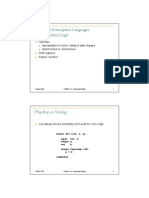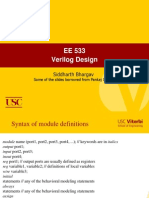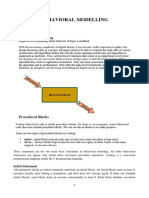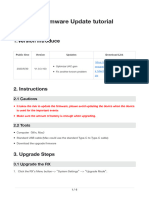0% found this document useful (0 votes)
72 views15 pagesVerilog Logic Modeling Techniques
This document discusses various ways to model combinational and sequential logic in Verilog using concurrent and procedural blocks. It provides examples of modeling logic using assign statements, always blocks, and best practices for writing synthesizable code in blocks. The questions cover topics like sensitivity lists, clocks, tri-state logic, for loops, and handling metastability.
Uploaded by
Purna satya srinivas VempalaCopyright
© © All Rights Reserved
We take content rights seriously. If you suspect this is your content, claim it here.
Available Formats
Download as PDF, TXT or read online on Scribd
0% found this document useful (0 votes)
72 views15 pagesVerilog Logic Modeling Techniques
This document discusses various ways to model combinational and sequential logic in Verilog using concurrent and procedural blocks. It provides examples of modeling logic using assign statements, always blocks, and best practices for writing synthesizable code in blocks. The questions cover topics like sensitivity lists, clocks, tri-state logic, for loops, and handling metastability.
Uploaded by
Purna satya srinivas VempalaCopyright
© © All Rights Reserved
We take content rights seriously. If you suspect this is your content, claim it here.
Available Formats
Download as PDF, TXT or read online on Scribd
/ 15

























































































